The World's $49 Trillion Infrastructure Problem May Not Get Solved Anytime Soon
This article Sid Verma may be of interest to subscribers. Here is a section:
An abundance of global savings. Trillions of dollars of negative-yielding bonds. And a bevy of institutional investors hungry for positive, long-dated yields to match their liabilities.
Conditions are ripe for an avalanche of private-sector capital to flow into unlisted infrastructure, turning an industry facing an estimated $49 trillion shortfall into an asset class which, its sponsors say, offers strong cash flows, uncorrelated returns and positive real yields.
58 percent of active investors surveyed in the second quarter of the year by data provider Preqin will invest more than $100 million in unlisted funds over the next 12 months compared to 42 percent who said that in the corresponding period last year, underscoring the increasing allure of alternative assets amid ultra-low yields from more conventional capital-market instruments.
It’s been a while since there was dynamism in the case for funding infrastructure spending. Part of the reason of course is that the environmental movement is highly active in demonstrating against any energy infrastructure projects, the case for new roads comes up against similar arguments while water and power suffer more than any from not in my backyard (NIMBY) arguments. Added to that has been the reluctance of governments to commit to big projects when their coffers are empty and unfunded liabilities are a constant bugbear.
Nevertheless the increasing acceptance that fiscal spending might be just the recipe to get economic activity going is gaining ground and not just in the USA. That suggests the rebound in commodity prices will also be reflected in the steel and cement sectors. Today I would like to focus on cement companies and perhaps review steel companies tomorrow.
I transcribed a section from my Favourites into a new cement section in the Eoin’s Favourites section of the Chart Library so subscribers will quickly be able to revisit the shares when required.
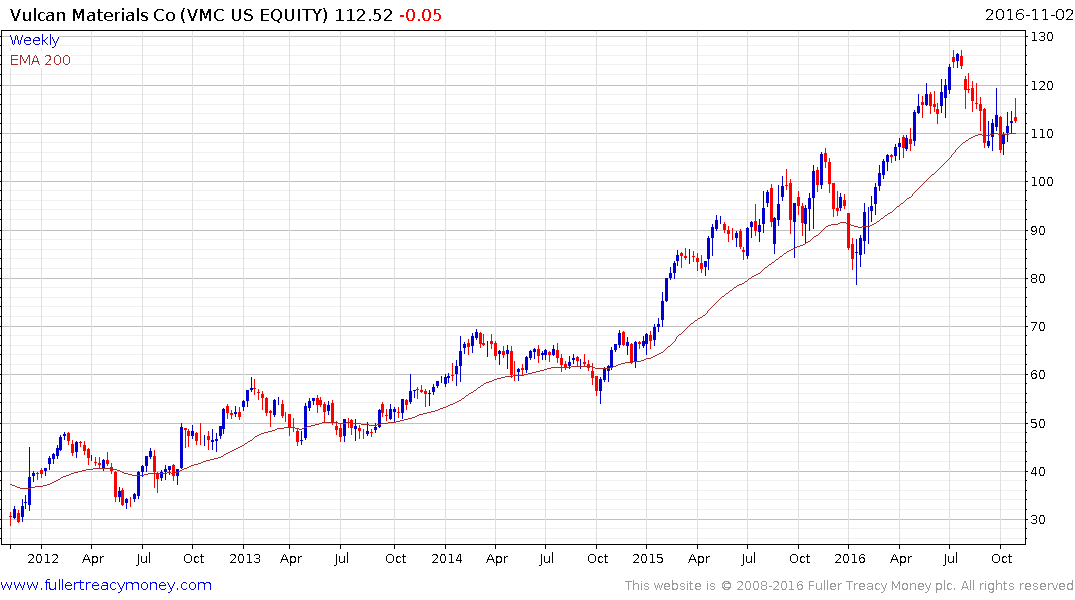
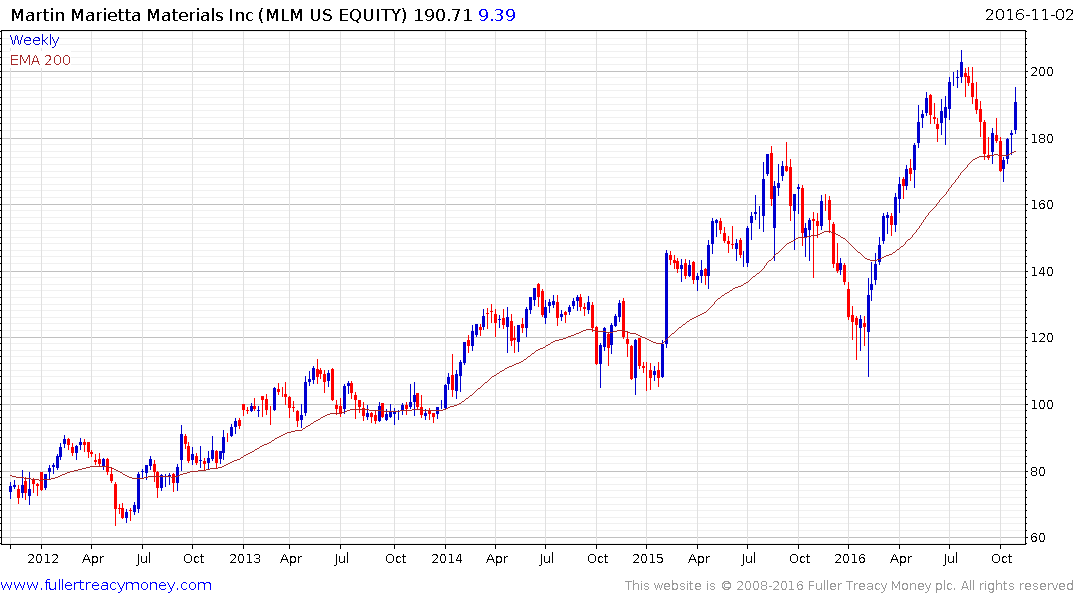
A number of impressively consistent chart patterns are evident right across the sector but most particularly those with a US focus. Vulcan Materials and Martin Marietta Materials have both just bounced from their respective trend means.
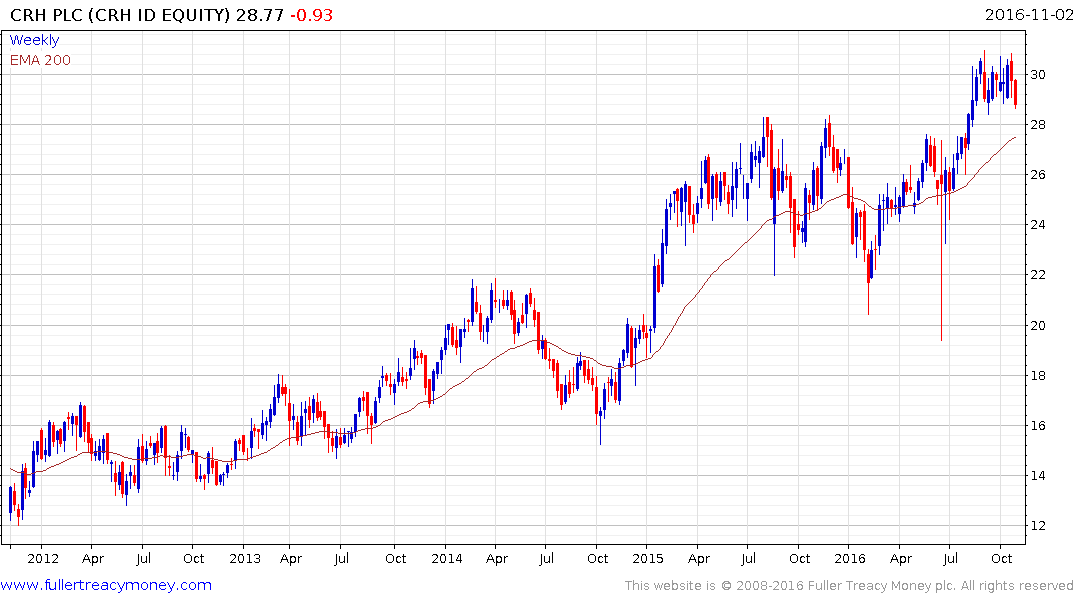
CRH which generates about half its revenue in North America is engaged in a process of mean reversion but has been trending higher in a reasonably consistent manner since 2011.
Eagle Materials rebounded impressively from its late 2015 low and is currently rallying from the region of the trend mean.
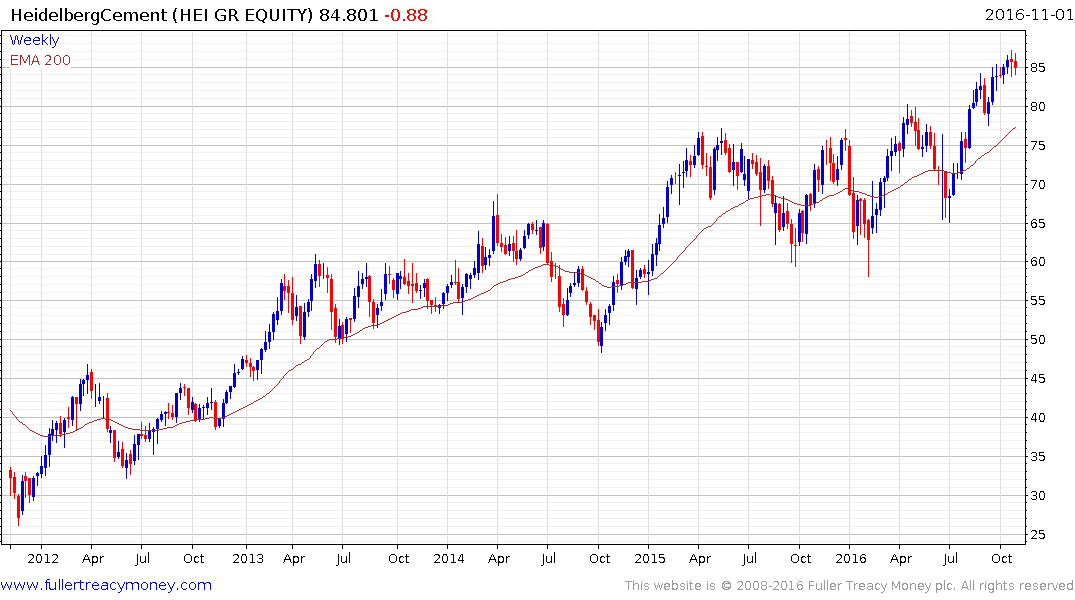
Heidelberg Cement is globally diversified but is somewhat overextended at present and the risk of a reversionary pullback has increased.
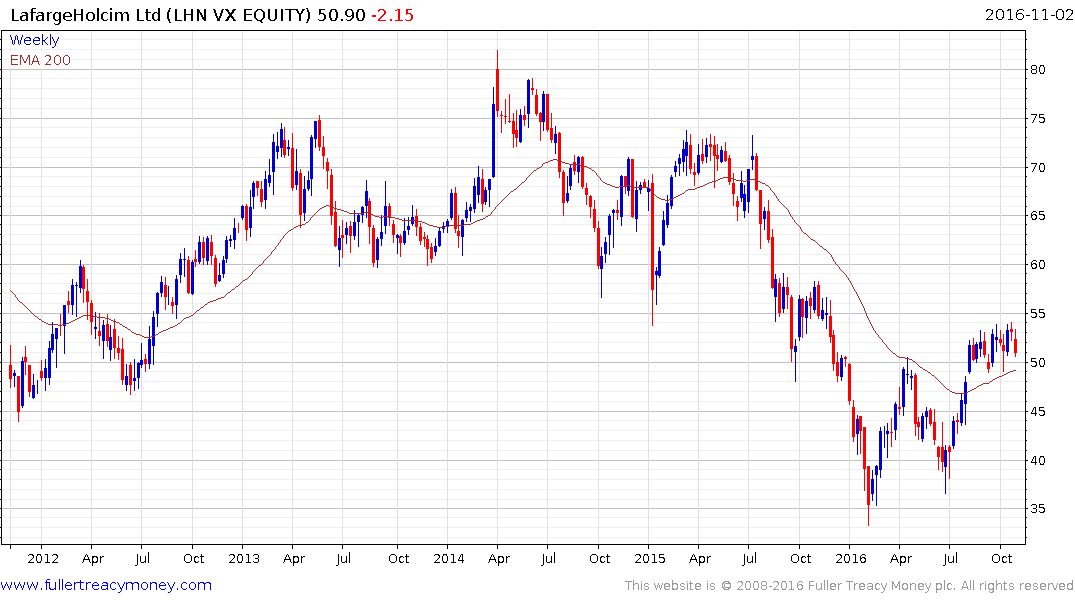
LafargeHolcim has been ranging in a volatile manner for years but firmed this week from the region of the trend mean.
The performance of the above shares suggest that cement companies have been among the greatest beneficiaries of lower energy and commodity prices and could now benefit from increasing demand for their products if appetite for infrastructure development improves.
Back to top


